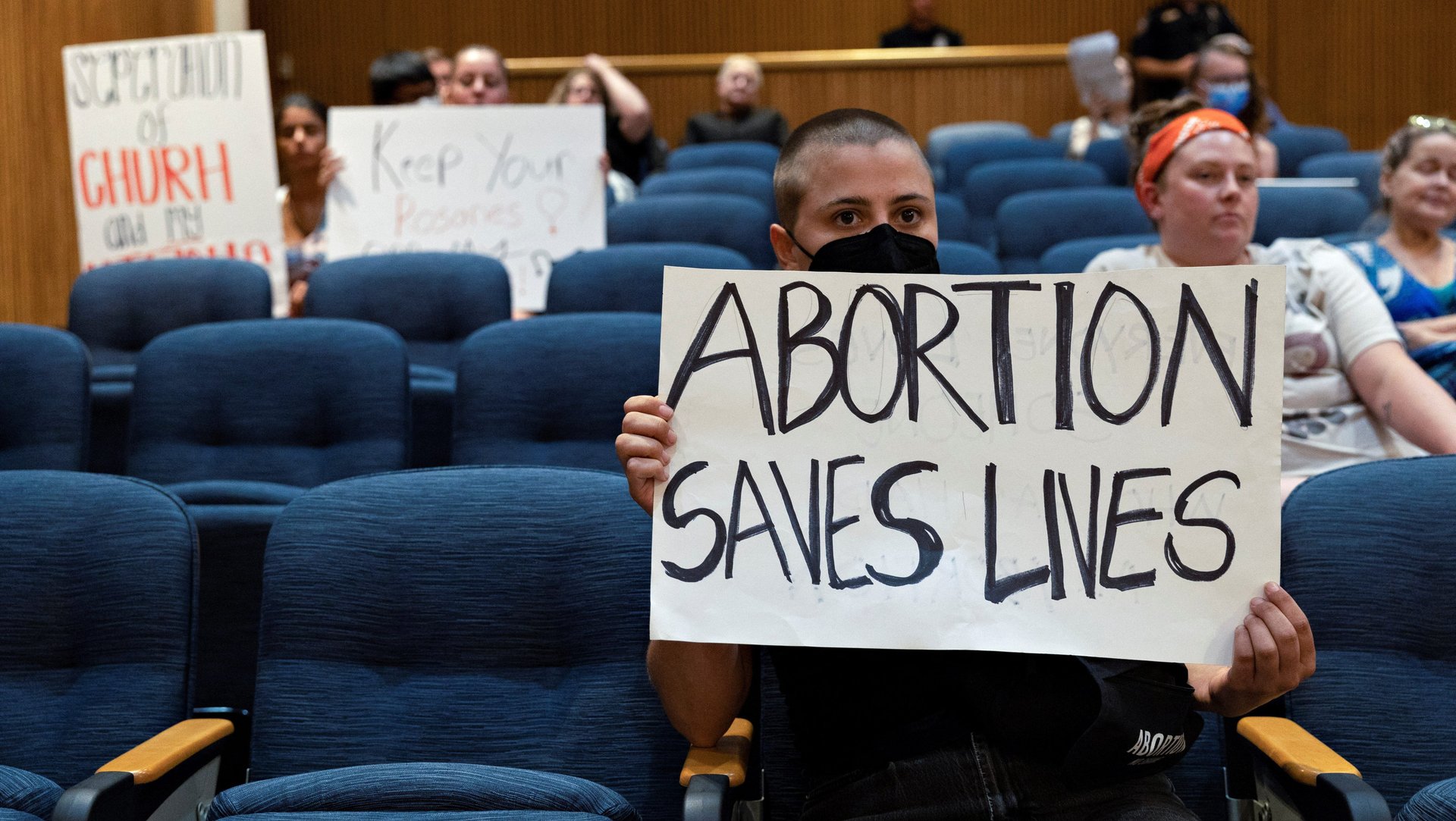Abortion bans will make pregnancies in the US even more dangerous
The US is by far the most dangerous rich country to give birth in. Abortion bans following the Supreme Court decision to overturn Roe v Wade will make the situation even worse.


The US is by far the most dangerous rich country to give birth in. Abortion bans following the Supreme Court decision to overturn Roe v Wade will make the situation even worse.
Maternal mortality (deaths occurring during or shortly after a pregnancy) dropped by half globally since the 1990s. But in the US, it went up dramatically, and as of 2020 there were officially 24 maternal deaths for 100,000 live births, or six times as many as there were in the late 1980s.
Research suggests that rate will rise even more as US states restrict abortion. A Duke University study estimates that maternal mortality would jump by more than 20% if abortion were denied across the US—and that doesn’t include mortality due to unsafe or attempted abortions. While half the states still allow abortion, more than a dozen have already banned it or will soon.
Maternal mortality is higher in states with restrictive abortion policies
The US’s overall maternity mortality rate is likely even higher than officially reported, as maternal health data is often unreliable.
Like most health indicators, maternal mortality data are a reflection of systemic inequalities. While all women are affected by it, Black women are at disproportionally high risk of experiencing severe illness or death during or after pregnancy. Overall, their risk of deaths is almost three times as high as it is for white women.
But maternal mortality splits the country geographically, too. Conservative states that have fewer welfare measures also often have higher rates of maternal mortality. In Louisiana and Indiana, for instance, the rate is 77 deaths per 100,000 births (higher than in countries such as Morocco, or Libya), and in Georgia, it is 69 per 100,000. In Kentucky, the worst state in the country for maternal mortality, it’s 115 per 100,000. The states faring worse are the ones where the most restrictive abortion laws are coming into effect, which will likely push the maternal mortality rates further up.
By way of comparison, the average rate of maternal death in Europe is eight per 100,000 live births, with many European countries falling below 5 per 100,000.
Black women are most at risk
Globally, unsafe abortions—which typically occur where there are no legal abortion services available—account for about 13% of all pregnancy-related deaths. While medications can make clandestine abortion less dangerous, cutting access to abortion contributes to increased risks of maternal mortality in other ways.
According to a study published in Demography, an academic journal of population research, in October 2021, pregnancies carry a higher mortality risk for the mother than a safe abortion, so when abortions are denied, there is a larger number of women going through pregnancy and facing the associated risks.
At the same time, unwanted pregnancies tend to be less healthy, notes Andrea Miller, president of the National Institute for Reproductive Health, because women who didn’t have the opportunity to plan a pregnancy might not be able to have access to prenatal care.
Non-Hispanic Black women, who according to the Centers for Disease Control and Prevention are the most likely to seek abortions, and most at risk of pregnancy-related complications, will experience a 33% increase in maternal deaths in the absence of abortion access and protection.